Text and photos by Natalie Dybisz aka Miss Aniela.
I can still recall the excitement I felt when I first saw a ‘levitation’ image. It brought to mind Victorian trick photos of women’s bodies floating under the hands of black-clothed magicians, like case studies of psychoanalysis, Freudian symbols of female hysteria. I also thought of the magical worlds in children’s stories: The Neverending Story and Peter Pan, epitomised by images I admired like that of young photographer Chrissie White, where a girl hovers toward her bedroom window in a purplish night-time scene. It seemed like levitation was the most exciting thing you could make happen in a photograph, and all down to careful shooting and some fairly simple Photoshop compositing work afterwards.
My own efforts began in 2008 in a hotel room with Reverie (above). From this I embarked on a series of images which culminated in The smothering (below), a self-portrait that has come to be my most popular both online and in physical exhibition, spread-eagled over the web and exhibited in multiple cities internationally. But it is this image that has in turn made me wonder critically about the whole ‘levitation’ concept itself. I’m almost glad that it’s nearly sold out as an edition print, because it comes to resemble a period in my photography, and angle to my work, that I’m somewhat inclined to airbrush away just like the hands around my ankles in Photoshop. Why is that?
Most people who view this picture ask ‘how’. Almost everyone who sees it asks how I made it. They may even open up a conversation, not with ‘how do you do’, but with ‘how did you do it?’ It hung at Photo LA where even the art buyers queried the process. The interest was based solely on its technique. To me, the ‘how’ in art is only interesting if I also hear the ‘why’; the two are inextricably linked and make the story behind any image. Technique by itself is the domain of photography ‘how to’ magazines, the Blue Peter-esque ‘here’s one I made earlier’ where the viewers are shown how to copy something, step by step, stroke for stroke, without thinking, without feeling; just doing, for the sake of it, like making papier-mâché Easter eggs.
I am fully aware of my role in promulgating the popularity of levitation, by my writing and presenting about the mechanics of its production. Of course, I am not the ‘pioneer’ of that or of any technique; I was in turn inspired by other sources and then participated in co-inspiring a new wave of others to ‘levitate’. I’ve presented on it at tradeshows, festivals and in talks, written about it in magazines and in my two books that grace bookstores worldwide, and done workshops specifically about levitation imagery on both sides of the Atlantic. I have chosen to do each of these things, primarily because I don’t think there is any ‘secret’ about the production: by showing the technique, I hoped I could demonstrate that it is all but a technique, to be used within a wider artistic process. Note the important difference between inspiration and imitation: the ‘inspiration’ artistry talks of should be that which is manifested by a feeling, not the urge to emulate an exact image or notion of the singular ‘idea’. And it’s the latter that inevitably occurs with levitation, which in its nature of eye-shocking immediacy, becomes all about the visual: a domain of DIY for anyone to try, and it’s the hyped herd’s tight focus on the mechanics alone that is unsettling. I can’t help but feel a knot in my stomach when I see a tutorial break down the ‘step by step’ on levitation, with my images cropped in on the action, straight down to the nitty gritty, like the ‘money shot’ in porn.
The crux here is to highlight a nagging feeling I have about the nature of levitation images. When I went through my initial tricks phase (in 2008) I felt as if I could not make a picture unless it had levitation in it. Fair enough, all artists go through phases. It is utterly natural and an artist’s attraction to something is their instinctive way to create. I liked the fact that a series of trick images was forming under my eyes, all with floating, falling or hanging women; a tapestry of elevation that for me was personally inspired by the symptoms of anxiety and a sense of unease.
But in these photo-sharing times, where anyone can make a picture and then share it with the world (something I have to be thankful for in my own career), so has the technique of levitation flourished. The dominos started to fall: someone would see someone’s image and ape it, then someone would see their image and ape that; endlessly creditless like a gushing river intermingling water from unidentifiable sources: the trend heightened, and the levitation photos came. My images formed a trickle dropped from one source pool, in turn falling into another, helping move the flow of a popular but superficial technique.
A tsunami of levitation came forth: a world of people laying across invisible tables and implied chairs, veiled by motion-blurred hair, peeping out from underneath textures, toppled backwards fossilised, reaching towards objects shot in another time and place; pictures that range from ‘jumping mid-air’ to a complete collage of electronically-sewn limbs. Compared to when I first saw a levitation photo, like any new thing I had not seen before such as HDR photography, I gaze at levitation like an adult might gaze blankly at porn, wondering back to how the novelty of such a sight would first enthral them. Whilst modern digital photography and the internet has opened up so many people’s expression of creativity, a side effect is that we end up seeing so much of something, its wears thin. The internet becomes a public pinboard of so many ‘magical’ pictures that the democracy by which the technique became proliferated dissipates the magic itself. I examine the proficiency of the Photoshop handiwork like a miserable mistress in a tapestry class instead of feeling fascinated that such a surreal vision can be achieved with photographs at all.
I think back to my levitation phase, when I could think of nothing else but levitating, and almost sigh with relief that it’s passed. After all, once you do a levitation photo, after you make a subject float, after you apply the most seemingly astonishing thing you could put in a photograph, how on earth do you do a picture of someone, just sitting or standing, ever again? To be able to present any photo or series and ‘feel’ its power of communication, there has to be a conviction of its worth, and levitation jumps so high up the barometer it almost goes off the scale, like putting two spoons of sugar into your tea every day for a month and then trying to drink tea without it. By employing the richest, most hyperbolic, and fantastical vision, the notion of a normal photograph can become bland. Your photographic tastebuds can get burnt by that hot sweet tea, able to be satiated only by the strongest substance. And that is not to say there is anything inferior about fantasy, surrealism and magic realism; composited images continue to form my main vein of work. But levitation poured a substance so rich into my blood that it soon became hard to bear. The strongest surrealism employed for a portrait: that of human flight, leaves everything else crashing back down to earth with a resounding banality, diminishing appreciation for anything less than spectacular.
I personally find a lot of inspiration in paintings and illustrations, probably more than other photography. I am attracted to surrealism and pictorialism, and I have always embraced how heavily contrived works simply bear different values and production stories to more candid images. Whilst everyone has his or her own reason for wanting to make a levitation picture, I believe it is very difficult for levitation in particular to be done as part of a wider concept or message and not as an end in itself: it is too distracting. It is the message itself.
Whether the creator is aware or not, levitation is usually always instant gratification. The viewer doesn’t have to think when they look at it. In the way that modern media moves the mainstream to emotion over reason, we love levitation, because it doesn’t require much effort at all to enjoy the picture. No background dialogue, historical, political or otherwise is needed (part of what drew me to it), nothing necessarily poignant but the sweetest-stitched tableaux, the melodic notes of visual pop music. It is universal, communicating across culture and age, the obvious impossibility of defying gravity, which can be rendered by anyone with a camera and Photoshop: or even just a well-orchestrated jump. For the creator, things get tricky – so to speak – as life continues after the inevitably heightened response following their first ‘levitation’. The audience’s expectations of that creator become simplified. They want more of the same instant kick, that rich diet to which they’re becoming pleasantly adjusted. Anything other than levitation is a consolation prize. I have felt as though anything I did post-levitation phase was at risk of boring my online viewers, a hangover after a wild night out. They saw suggestions of levitation where there weren’t any, and they sometimes still do. I feel as though I have somehow truly ‘tricked’ them. Levitation left an odd aftertaste, a phantom presence in my work that I didn’t quite like.
I am a casualty of the levitation war with myself. I feel like I have had to re-teach myself appreciation of a photograph, a regular photograph. I had to soothe myself with the reminder that there are more purposes to photography than to instantly titillate, wow and melodramatise. That such thing as realism exists, and that finding surreal moments within the ‘real’ can often be more rewarding.
Of course, this is just about my own world, and my conflicts between desires for both manipulated and untouched pictures, a diversity that may not be so wide in the work of other people who have pleasantly levitated with less of a bump back to earth. Like an ex-alcoholic having the occasional tipple, I still sometimes create levitation-based imagery although they’re usually within a specific context. And in truth, I have seen photographers who have attended my levitation workshops go on to incorporate the technique successfully into commercial and fashion work. In my own personal work, I have wiped the palette clean and rebuilt new images upon it, introducing titbits of surrealism slowly back in, like a child’s rationed chocolates after teatime. That way I actually enjoy the pictorialist, surrealist treats more. It’s like stripping back your make-up routine so that it doesn’t take so long to wearily apply the make-up every day, and to not look so different with the make-up off at night. I can appreciate a photo again – and as ever, I love how it can develop into something else in Photoshop – but with subtleties, and new ‘tricks’, something that may even go unnoticed at first, or brew into a wild cocktail. Tricks that are enmeshed primarily in reality, some far more saccharine than others, and going back to the tea analogy, it’s fitting that I actually have no problem switching from sugary tea to sugarless tea in the same day.
I didn’t really think too much about the reader is supposed to take away from this article. It’s not rosey and pleasant and joyous. In a sense it’s the opposite, like pricking the balloons on the girl levitating above a cornfield and watching her tumble into a heap. One of the main challenges of looking at any photography is challenging oneself: to see things differently, to see it from another perspective. I seek a balanced diet in photography by trying to understand other people’s tastes – trying to view my own ‘taste’ objectively from time to time – and when I do happen across another person’s levitation photo, to see it through the vision of their own freshly excited eyes.
This is the first article of a series of three essays:
- Intro: Undoing the illusion
- Falling back down to earth: recovering from “Levitation”
- Model behaviour: the story of Linda
- Stripped: a fallen body of work
For more informations and photos, please visit Natalie Dybisz aka Miss Aniela website.

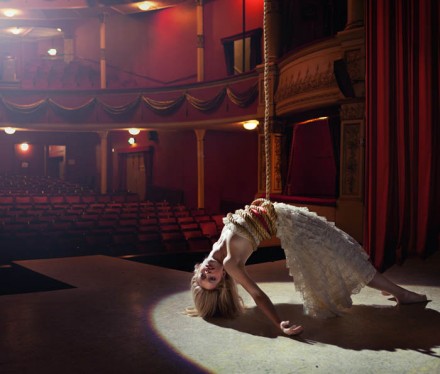
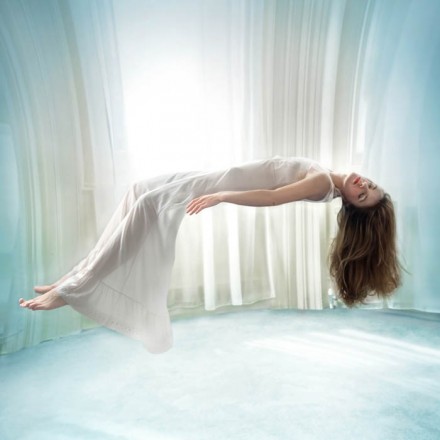
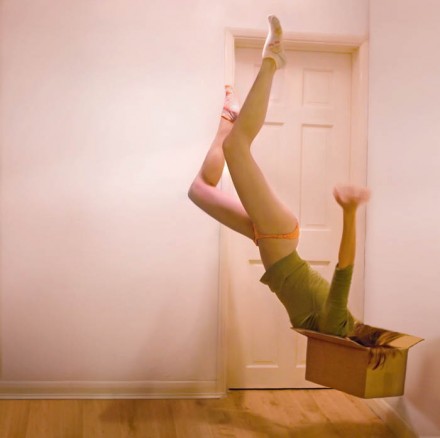
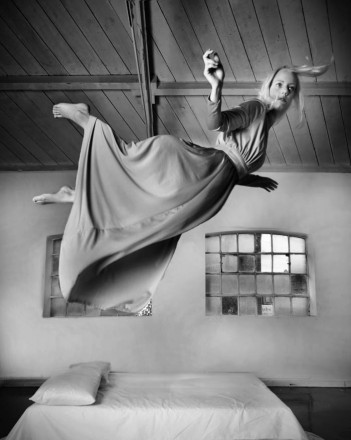
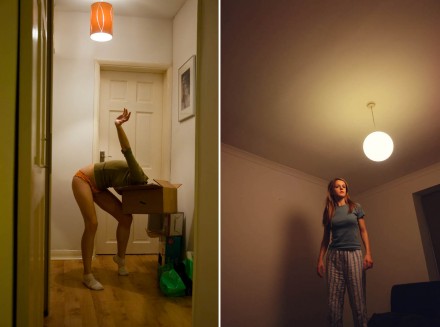
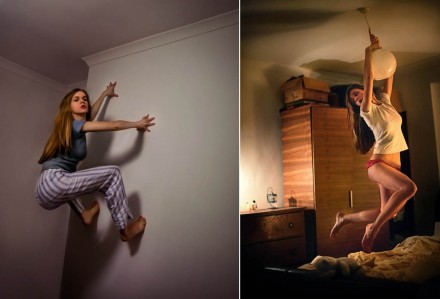
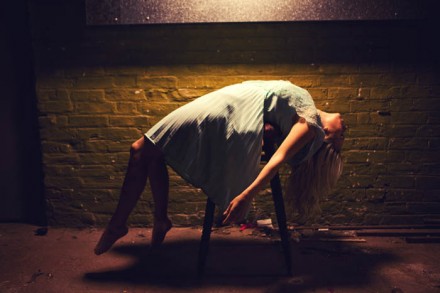
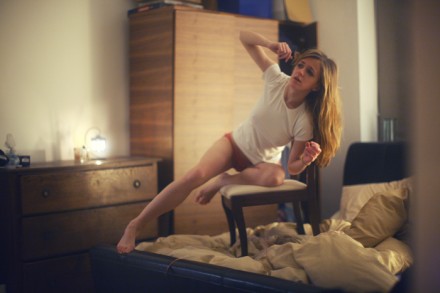
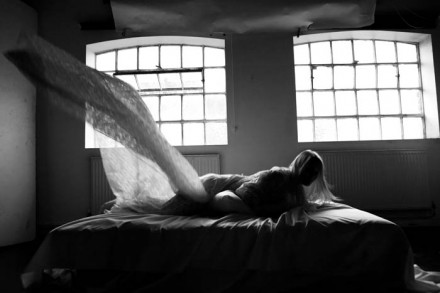
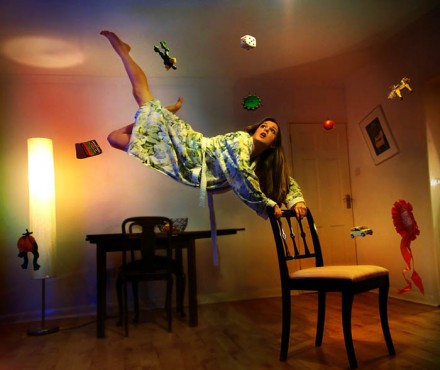
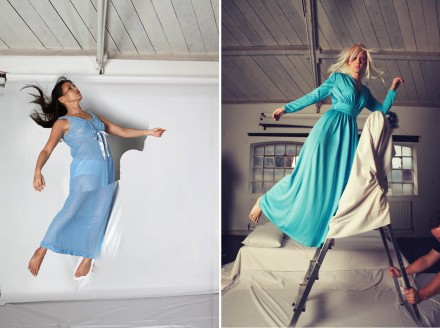
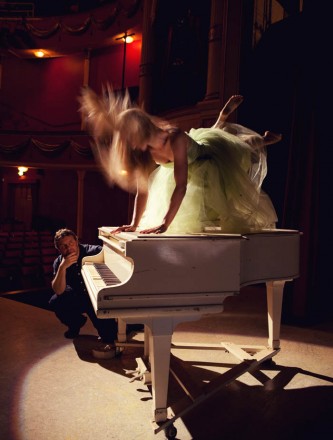
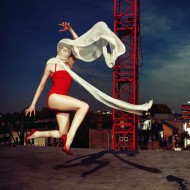
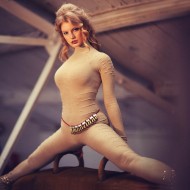
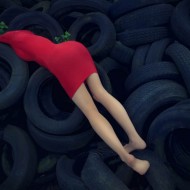

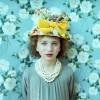
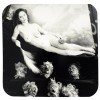
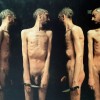
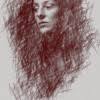
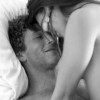
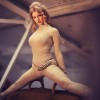
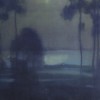
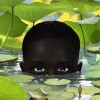
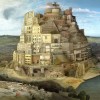
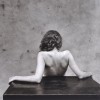
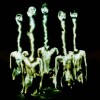
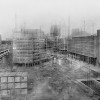
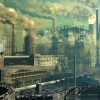
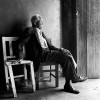
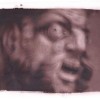
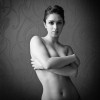
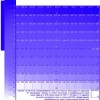
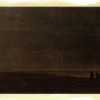
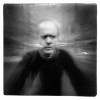
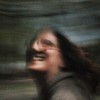
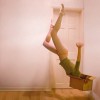

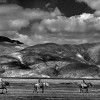
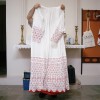
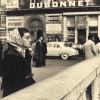
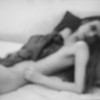

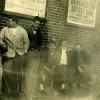
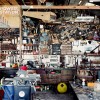
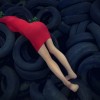
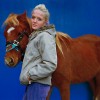
Natalie, thank you very much for this wonderful essay. At the end of your text, it looks like you are uncertain about the content and consistence of your article. Let me say that it really resonate with me, and I’m sure it is the same for many Camera Obscura readers.
First of all the eternal question of the technique. I completely agree, it’s crazy how a lot of photographers are mainly interested by technique itself. No one would ever ask which brand of oil colors Monet used to paint his wonderful Water Lilies, yet is something that happen everyday with photography.
In my opinion, one of the reason why it happens, is that photography -compared to other media- is much more related to complex technology. Any professional photographer have to learn a lot of technical stuff: starting from lighting syncing, passing through raw developing and post processing, to finish with printer calibration and profiling (and I’m just oversimplifying the process). If you draw you just need a pencil and some paper. Sure, you still have to learn the drawing technique, but the tools involved are much more traditional.
Another reason is that photography is more obviously influenced by the technique used. I mean, almost all the HDR photos just look the same, as well as instamatic and polaroid effects, pinhole, historical process and so on. A bit like what you say about levitation, like the effects I mentioned, is something very bold and loud. When you are a newbie, the results obtained using these techniques looks cool and different, so you just produce a lot of images without paying any attention to the content, but just because of the visual effect. The value of the photograph itself is completely hidden by the technique used.
Personally, I’m much more interested in why a photographer took a photo, compared to how the image itself was obtained. This is why Camera Obscura is above all a site of discussion about photography, much more than a technical magazine. But at the same time I’m a real geek and technique is extremely important in my work. I think this is something really exciting in photography, this kind of tension between expression and technique, in all its declinations.
But I’m diverging, back to your essay! I really liked was your sincerity: the fact that you struggled to free your self from the levitation approach. It’s so easy to be self indulgent, it’s something I know from my personal experience. I really appreciate that a successful photographer like you, still has the honesty to recognize that create something new is a struggle, and fall back on previous successful works is always a temptation.
Finally, if you don’t know his work, you may be interested by the levitation photos by Ivo Mayr and the two articles he wrote for Camera Obscura: Leichtkraft and StadtLandFlucht and passanten. His work is really nice and ironical, I’m sure you will love it!
Hi Fabiano,
Thank you for your feedback!
Your comments are very valid.
I agree, I find it very interesting to hear the stories behind artists’ work and that which includes some comment on the equipment or technique used. For me it gives us a sense of reality as to the making of the works, it takes us there, it gives us a clearer picture of how everything came together. But then there is a line between commenting on ‘how I made this image’ and ‘how to make this image’. I love the written word alongside images (mostly when given from the artist’s own point of view rather than a journalist with a motive, hence my attraction to your blog). I have made a concerted effort to uphold this distinction when I write about my works: in my book ‘Creative Portrait Photography’, for any certain image or set of images, I talk of the experience in making them: combining comment on artistic, technical and anecdotal. There is a big difference between that style, and the ‘step by step’ breakdown of the complete production of an image which runs risk of insinuating that the method used can, and should, be replicated by the reader.
By the same token, I love when a viewer gives the sense that they enjoy both the ‘wow’ factor to a composite image’s illusion, but also the artist’s mind behind it. I think it boils down to respect for each other in life as intellectual beings, not regarding anything single-dimensionally, something to be copied and reproduced. This essay was written out of a feeling that levitation, more than other surrealism, is so dramatic and tantalising that it gets singled out easily.
Thanks for the links to Mayr’s essays, I will definitely read them!
Hi Natalie,
Thanks for this piece of text which is soooo recognizable for me as well. I made a few levitation photos, to experiment and to support my feelings for that photo. I had exhibitions with them, and the only question I got was ‘How did you do it??’. Instead of looking further and find a story and context to the photo, which I wanted to talk about, there was only attention for the ‘how did’ question. A big disappointment for me, though I love(d) levitation photography. Love with (d) behind it, because I see a lot of the same things appearing on the internet, Flickr, but also in magazines. A lot of them look like copies from a copy from a copy from the original…
I also have that feeling with certain styles people are copying from other photographers.
There are a few photographers with whom I think: ‘oooh I wish I would have made that picture’. And I love to get inspired by their work, but I don’t want to replicate it. And that is what I see happening a lot on the internet. It makes me a little sad on one side to see less unique/personal creativity and happy on the other side to see what a big influence they have.
Old Dutch paintings and illustrations have my big ‘inspiring’ interest, more than other photography. I am now doing a little project by remaking the paintings in a photograph, with other little details than the original painting. It feels to me like back to basic.
What did I answer the people with the ‘how did’ question? Instead of you I didn’t give people an insight to the technical part. I just said I have a levitation button in my apartment. People are not completely satisfied when I say that, and right after that I challenge them to make a levitation photo with their own creative minds, that levitation is a medium, a technique to get the feeling/emotion I wanted in my photo.
Thanks again Natalie for sharing your thoughts. It is good to know that there are other photographers struggling with the same things I do. It is good to question yourself about the things you do and the principles you have. Life is full of changes, which makes it really, really interesting!
Thanks again!
Lieke
Thanks for your comment Lieke, and for reading my piece. Interesting to read what you said about internet copying culture.
I had peope encourage me to make up an answer like the levitation button idea! But I just naturally just start saying how easy the techique is, etc, the explanational workshop side of me came out. I’m too down to earth…
I don’t ordinarily comment but I gotta admit thankyou for the post on this great one : D.
You can also subscribe to this post comments RSS feed.